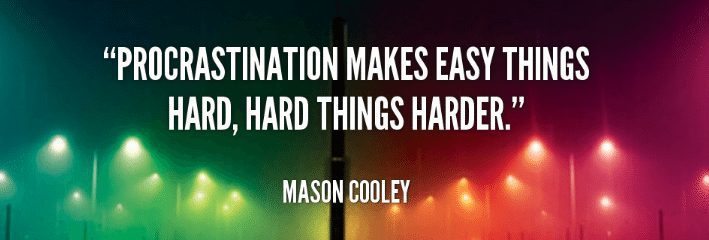Why The Change We Seek Is Also The Change We Fear
We often ask ourselves how to change and come up with things like New Year’s resolutions, promises, vows, and goals.
We are constantly talking about, are in the process of, or have just finished making changes.
Change is the core of our existence as humans.
We change schools, jobs, partners, life direction, and habits of every kind.
However, for all the change we seem to do, we very often are unsuccessful.
We make attempts; we succeed in the short run, but over time we fail.
For as much as we structure our lives around change, for most of us, change is scary.
It creates a sense of the unknown; it makes us anxious, and we don’t like it.
3 Steps to Change Your Life
Regarding how to change, most people fall into one of three groups.
- Some people don’t know what to do.
- Some people don’t want to make changes or don’t feel like doing anything differently.
- Most people don’t know how to make the changes they know and want. They don’t have the skills they need to make a change successfully.
First, do you know what you need to do?
For example, do you know that exercising, eating right, and following your doctor’s recommendations are good for your health?
Do you know that paying only the finance charge on a credit card will keep you in debt?
If your answer is “yes,” you are like most people.
Most people know what to do, and so they don’t fit into group 1.
Second, do you want to change your life?
If your answer is “yes,” you are like many people.
Most people want to make the changes, so they don’t fit into group 2.
Knowing How To Change
Do you know how to start and maintain the change process?
If your answer is “no” or “I’m not sure,” you are most people.
Few people know how to change their behaviors successfully to achieve their goals.
Although they know that changing their behaviors will make them feel better and they want to do them! Most people simply lack the skills to effectively make a lifestyle change.
Here are five basic skills to help you here: SMART.
- Set a course for success. Make sure the goal is very specific, so you know exactly what it is you are trying to achieve. Exercise is not a goal. Walking three days a week for 20 minutes is a goal. Make the goals realistic. If you are going to shoot for the stars, have short- and long-term goals.
- Monitor your actions. Keep track of what you are doing. Mark down on a calendar every time you do the behavior. The more you monitor, the more likely you are to do the behavior.
- Arrange for success. Change your environment to remove barriers. If you plan to exercise in the morning – take your clothes out the night before. If you want to reduce sweets, remove them from your house.
- Recruit a support team. Research clearly shows that having others support you in your efforts will help you be a success. Ask friends and family members to provide support. Let them know they are critical to your success and show them any progress you have already made towards your goals.
- Treat Remember: behaviors that are rewarded are more likely to occur. So plan out how you are going to treat yourself for sticking with your resolution.
The Big Bad Drift
So, do you now know how to change?
Are you ready?
21 days and you will be fine?
Sorry, behavior change simply doesn’t work that way.
As we look to change our ways, let us be aware of the undercurrent: the tide that will try to bring us back to where we started.
The Behavioral Drift is a fancy term for the tendency to go back to old behavior patterns until the new behaviors have become a habit.
The good news is that just knowing that the Drift may occur will allow you to expect it to come, catch it, and then do something about it.
Here’s how:
How To Change Successfully: The Drift Plan
1) First, have a set of backup behaviors in case of bad weather, travel, time, etc.
So, with exercise:
- Walk in place for 15 minutes while watching T.V.
- Walk at the mall vs. outside
- Walk around the hotel
2) Challenge any negative thinking that slips in.
Boost motivation by answering honestly:
- Why am I trying to better myself by (i.e. exercising)?
- Are these reasons important to me?
- What am I doing instead of (i.e. exercising)?
- Are these other activities more important than the reasons I have for bettering my health?
3) Set up a support system.
Let your family and friends know about your efforts to make change OR designate one person to be your Drift Partner.
Ask that partner permission to call them and talk to them when you drift.
The drift partner merely has to encourage you to get back on track and remind you of your goals
Keeping It Real
We have such a terrible tendency to think in all-or-nothing mode.
One splurge, one slip, one mistake means everything is over, and there is no benefit from staying healthy.
Perspective first—any time you cannot stick with a healthy diet, fail to exercise, or cannot adhere to any behavior, you’ve blown it only for that time.
There is no carry-over effect. Start thinking about being successful or failing just one day at a time.
Where people really get into trouble is the mindset of—I’ve blown it today, so it’s all over.
Stop doing that.
Remember this phrase:
“Staying healthy does not require perfection- it requires the right behaviors more days than not.”
The Little Trick: 3-Day Rule
Now here’s a little trick.
It’s called the 3-day rule pledge.
Any time you have gone three days or more without sticking with a healthy habit for any reason, you agree to sit down and then write why you didn’t stick with it.
Maybe you were on vacation; you were sick—maybe just not motivated.
Now here is the most important part: pick an exact date to get back on track.
Put that on a sticky note or in your calendar wherever you can see it.
The key to this whole pledge is not to go over three days and to pick an exact date.
This allows you to slip – but NOT for too long and then to have a very specific startup date – as long as there is an exact date – you can make it as far in the future as you like.
How To Change: 3-Day Rule Pledge
If I stop the actions, I have set out to reach my goals for three days, for any reason, I pledge to sit down and do:
- Write why I have stopped.
- Write what I need to do to get started again.
- Pick the exact date I plan to start again and jot it down.
- Post the start up-date on the refrigerator or other location where it can be seen
What It Comes Down To
The bottom line here is:
- Change takes skills
- Most people are motivated to change
- You will drift
- You don’t need to be perfect
- You need to get back on track.
This is how to change for the better.
You have it all now.
No more guessing, no more hoping.
Just success.











